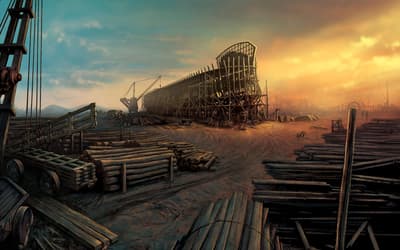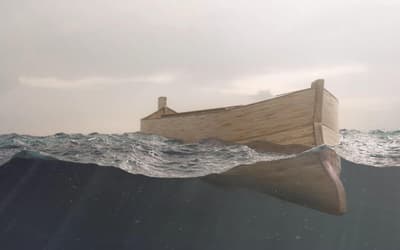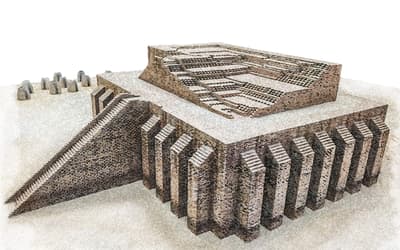The views expressed in this paper are those of the writer(s) and are not necessarily those of the ARJ Editor or Answers in Genesis.
Abstract
In her objecting comments regarding my discussion of the descendants of Noah’s son Shem in my paper “The Ark Landing, the Migration, and the Early Settling of Noah’s Sons. Part 1: The Beginning and the Sons of Shem” (Osgood 2023), Habermehl (2024), has clearly rejected the whole paper and the concept presented therein. In so doing, she has rejected a wealth of archaeological findings over the last 150 years and the findings of details in thousands of cuneiform tablets from lower Mesopotamia. She has insisted that that area could never have been the place from which Abraham originally migrated to first arrive in Northern Syria, then on to the Holy Land.
Keywords: Northern Syria, Southern Iraq
Habermehl’s basis (Habermehl 2024) for rejection of my paper (Osgood 2023) is a concept, clearly set in cement in her own mind, that Shinar is not Sumer of Southern Iraq, that Babel has nothing whatsoever to do with later Babylon in either concept or geography, that Nimrod was not the equivalent generation of Enmerukar of the Sumerian record, and that the latter is a mythical figure only. She also displaces Elam to a minor spot in northern Syria, and has insisted on a rigid belief by narrow interpretation of the Scripture that the people who were building Babel were all huddled together in a small spot somewhere in northern Syria.
I have already submitted a paper (Osgood 2024) in reply to Habermehl (2011), who asked, “Where in the World is the Tower of Babel?” So, I leave my arguments regarding her views for the reader to judge when that paper is published. But one thing is very clear, Habermehl’s view on this subject and mine are irreconcilable and I totally reject Shinar, Babel and Ur being in the north rather than southern Mesopotamia (Iraq).
I am not of a mind to make a tedious reply to objections of Habermehl (2024), but will outline a few. She rejects the equation Enmerukar = Nimrod, but let me show the logical argument for that equation:
- Nimrod was second generation after the Flood.
- Enmerukar was second generation after the Sumerian Flood record.
- Nimrod built Erech.
- Enmerukar built Uruk, the archaeological site known as Warka.
- Transliteration of vowel sounds is fluid.
- Nimrod is called “the hunter”.
- The “kar” epithet in Enmerukar’s name means “the hunter”.
Enmerukar is Sumerian and when translated into the non-vowel semitic Hebrew is ‘nmru’- kar, and when taken into English with its vowels = Nimrod—the hunter.
Habermehl (2024) denies that Shem’s son Elam gave rise to the southern Iranian people known through history and mentioned many years later by Ezekiel, Jeremiah and Isaiah as “Elam,” and clearly identifiable as the region known today in Iran as “Fars.”
Habermehl (2024) seems to be under the illusion that because a person or place is mentioned in Sumerian legends, it is therefore only legendary and not real, Clearly she has been unable to relate these legends to the archaeology of Sumer (Southern Iraq), a problem not so apparent to generations of archaeologists.
Somehow Habermehl (2024) suggests that the Ubaid culture which I identify with Shem’s son Arphaxad has a date of 4500 B.C. attached to it in my discussion. I find that claim hard to follow. She clearly has no significant grasp of the concept I have presented. She also rejects my placement of the horizon dating the dispersion to that period, but fails to give any other satisfactory placement archaeologically, insisting that Ubaid is “after Babel,” with no justification given.
I repeat that the claim of a northern Shinar and Babel is irreconcilable with the archaeological record that I have studied for many years, and I stand by my claims in Osgood (2023). The readers can judge for themselves.
References
Habermehl, Anne. 2011. “Where in the World is the Tower of Babel?” Answers Research Journal 4 (March 23): 25–53. https://answersresearchjournal.org/where-is-the-tower-of-babel/.
Habermehl, Anne. 2024. “The Ark Landing, the Migration, and the Early Settling of Noah’s Sons. Part 1: The Beginning and the Sons of Shem—Comments.” Answers Research Journal 17: 403–405.
Osgood, A. John M. 2023. “The Ark Landing, the Migration, and the Early Settling of Noah’s Sons. Part 1: The Beginning and the Sons of Shem.” Answers Research Journal 16 (October 4): 501–528. https://answersresearchjournal.org/archaeology/ark-landing-migration-early-settling-noahs-sons-part-1/.
Osgood, A. John M. 2024. “Where in the World is the Tower of Babel? Comments” Answers Research Journal 17 (March 13): 215–216. https://answersresearchjournal.org/tower-of-babel/where-is-the-tower-of-babel-comments/.







